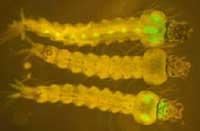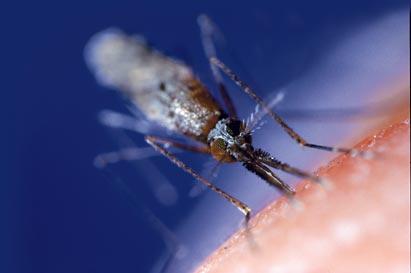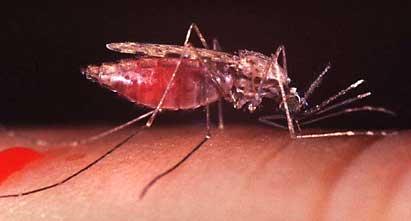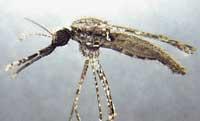Transgenic mosquito against malaria
2002/05/23 Atxotegi Alegria, Uhaina - Elhuyar Zientziaren Komunikazioa
The malaria parasite contaminates between 300 and 500 million people each year and causes an average of 0.7 million and 2.7 million deaths. It is a very complex disease in which in the process of transmission and reproduction (which lasts about three weeks) three organisms intervene: the parasite that causes the disease, the human being that suffers it (or another animal) and the polluting mosquito that exercises the role of transmitter when killing the victim.

So far, American scientist Marcelo Jacobs-Lorena and his colleagues have created genetically modified mosquitoes to try to deal with this problem. These animals have been given the blood of some mice with malaria and discover that parasites are greatly reduced in the salivary glands of transgenic mosquitoes.
The team of scientists discovered a few years ago the molecule called SM1. This molecule, which prevented the parasites from reaching the salivary glands, has added to the invented mosquito a gene that produces the same molecule in its digestive system. Thus, when the transgenic mosquito begins to feed on this blood, the SM1 molecule begins to produce and the number of parasites decreases.
Looking ahead, scientists would like to use a new strategy: replace wild mosquitoes of nature with new transgenic mosquitoes that do not spread the disease. However, they know that before doing so, they should pass many tests that these mosquitoes are not harmful to the environment.

Gai honi buruzko eduki gehiago
Elhuyarrek garatutako teknologia





